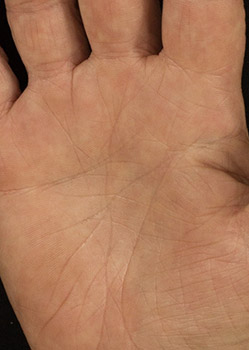Pompholox (Dishydrotic) Eczema
Pompholox, which is also called dishydrotic, eczema is a common blistering rash of the hands and feet which is often intensely itchy. It is commonly experienced by those that wash and use their hands a lot, like mothers of young babies and nurses, but is also triggered by hot weather (return of summer), differing allergens, mental stress and physical trauma. Roughly 50% of people also have atopic eczema, or a family history of it.
Chinese medicine has diagnosed pompholox eczema for many hundreds of years, with one of the traditional names being ‘Ant Nest’, and has developed very effective herbal treatments for it.
Symptoms
Typically, small, 1 to 2 mm, crops of intensely itchy blisters quickly form on the palms of the hands, the sides of the fingers and/ or on the soles of the feet. Occasionally the blisters may join together and form bigger blisters. The skin on the hands and feet is thicker, with an extra layer of skin being present for protection, which may prevent the blisters from bursting any actual liquid out, thus giving the skin a tapioca look or, as it is called in Chinese medicine, like that of an ants nest (see attached photo).
Eventually the active blisters calm down and are followed by a dry, cracked and fissured phase, which can be quite painful, making it hard to preform normal activities (like walking).
At some point the blisters cycle through again, which is then followed by another dry phase.
Pompholox eczema is often complicated with bacterial infections, such as Staphylococcus aureus and/or Streptococcus pyogenes. This can lead to the formation of painful pustules (blisters filled with pus), swelling and pain.
The nails can be affected when the eczema is adjacent to them, causing dystrophy, irregular pitting and ridges.
Treatment
The primary treatment for pompholix eczema is to work from the inside-out, using individually prescribed herbal medicines which help stop the blisters from forming, as well as heal and nourish the skin. Hand care, with the avoidance of agents that overly dry or irritate the skin (like many soaps), is also very important.
External herbal medicine soaks can also be useful to stop itching and resolve the blisters more quickly.
Success
Dr. Erikson finds most people respond quite well to herbal treatment for their pompholox eczema issues. Somewhere around 85% of patients seem to clear and stabilize, with long term benefits being seen when patients continue to protect their hands for the initial year after stopping treatment.

before

after
